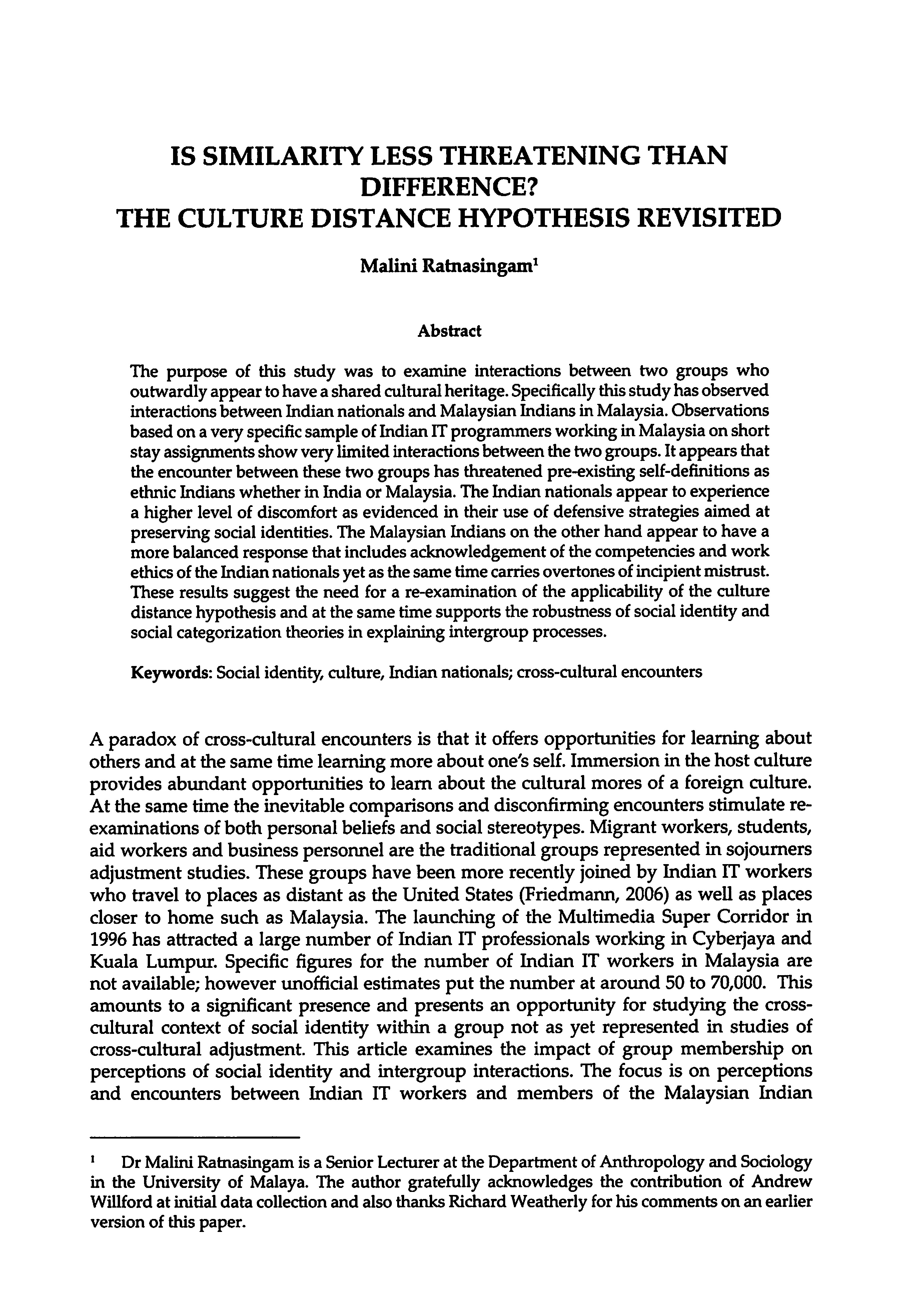IS SIMILARITY LESS THREATENING THAN DIFFERENCE? THE CULTURE DISTANCE HYPOTHESIS REVISITED
Main Article Content
Abstract
The purpose of this study was to examine interactions between two groups who outwardly appear to have a shared cultural heritage. Specifically this study has observed interactions between Indian nationals and Malaysian Indians in Malaysia. Observations based on a very specific sample of Indian IT programmers working in Malaysia on short stay assignments show very limited interactions between the two groups. Itappears that the encounter between these two groups has threatened pre-existing self-definitions as ethnic Indians whether in India or Malaysia. The Indian nationals appear to experience a higher level of discomfort as evidenced in their use of defensive strategies aimed at preserving social identities. The Malaysian Indians on the other hand appear to have a more balanced response that includes acknowledgement of the competencies and work ethics of the Indian nationals yet as the same time carries overtones of incipient mistrust. These results suggest the need for a re-examination of the applicability of the culture distance hypothesis and at the same time supports the robustness of social identity and social categorization theories in explaining intergroup processes.

